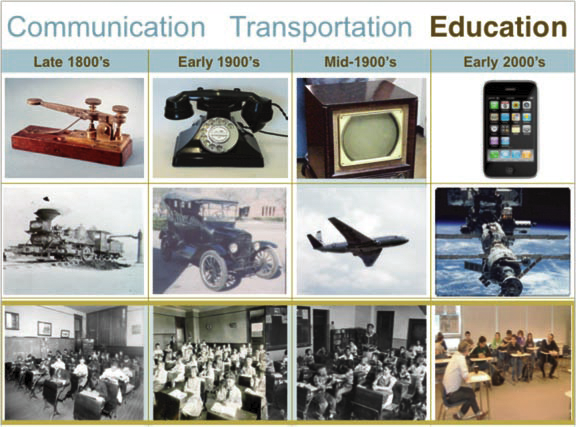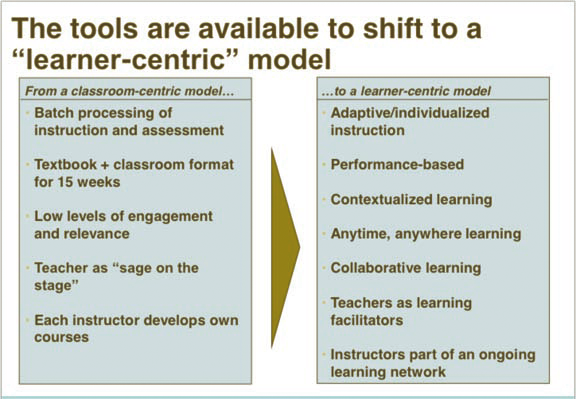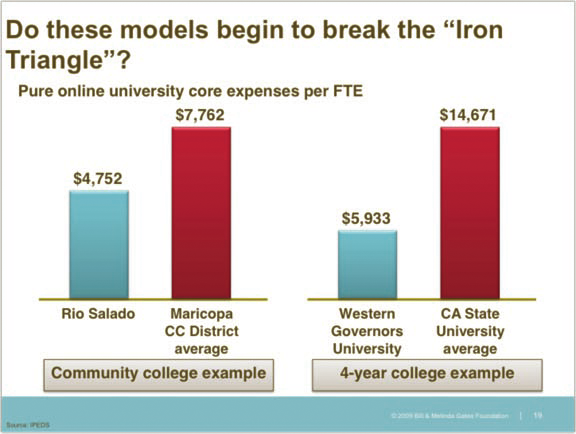The Revolution Will Not Take Place On Line
Times are tough everywhere.
People are losing their jobs and losing their homes. And now comes the news that Disney will be refunding millions of dollars to everyone who bought all those educational Baby Einstein videos because it turns out they weren’t, well, educational.
And Disney is not the only mega-corporation that has fallen on hard times. The advertising budget at Hewlett Packard seems to have been especially hard hit. So it was good to see government doing its part to help out last Thursday as representatives of HP were given time to peddle their wares in a hearing of the Washington House of Representatives Higher Education Committee and on TVW. For a good half hour committee members and audience were treated to a demonstration of the ways in which HP can make the world your classroom for the low, low price of $146 per license.
Leaving aside for a moment all the advertising on the public dime questions, the HP presentation gives us the opportunity to reflect on all the technology-and-education hubbub that’s in the air these days. Baby Einstein was just the beginning—now our techno-corporate friends, undaunted, want to sit us down in front of a screen to get college degrees on line.
To be sure, the emergence of the virtual world and other technological advances have been as revolutionary for education as they have been for everything else. In fact, universities and their faculty embraced these advances long before they became so popular with various education reform movements. Technology has greatly enhanced the classroom experience and it holds tremendous possibilities for bringing opportunities to places and populations that have often been excluded from higher education.
But in these days of shrinking education budgets, many people have been tempted to see technology as a fiscal wonder drug that will allow us to produce degrees more cheaply, just as we might use technology to produce automobiles or fireplace implements more cheaply. This fantasy depends on some dubious historical arguments and a very dim view of teachers.
This fantasy depends on some dubious historical arguments and a very dim view of teachers.
Consider, for example, this slide from a recent report from the Bill and Melinda Gates Foundation called “Disruptive Technology and Delivery Models in Higher Ed”…
Were I a more technologically sophisticated blogger, you would see this slide in the suspense-building way that the Gates Foundation folks prepared it, with the telegraph-to-iphone strip leading off, followed by the miracle migration from the steam engine to the space station, and then topped off with the punch line of repetitive classroom photographs, where education has only recently managed to emerge from black and white and into a drab, 1960s-era Kodachrome color.
You don’t have to be a Microsoft billionaire to get the point here: the hip, new techno-twenty-first century has made obsolete the traditional educational model of a bunch of white people sitting around talking. Power Point doesn’t auto-check for historical accuracy or find and replace ideas that are less than an inch deep, but it’s great for simple one-liners and the clear message here is that Professors Are the Problem.
 This visual demonization of faculty is built on a widespread and false assumption that has become axiomatic in the techno-zealot education reform community: that professors, despite their constant contact with students, have no idea how those students learn. This assumption underwrites this next slide from the Gates Foundation presentation…
This visual demonization of faculty is built on a widespread and false assumption that has become axiomatic in the techno-zealot education reform community: that professors, despite their constant contact with students, have no idea how those students learn. This assumption underwrites this next slide from the Gates Foundation presentation…
Listen to any advocate for on-line learning, elearning, ilearning, or hybrid learning and within two minutes you will inevitably hear something about how the world has changed and, no matter how hard it may be for those tweedy professors, we now have to embrace student-centered and “learner-centric” models. Only now, as Hewlett Packard and Microsoft and Apple have entered the education market, have we discovered that different people learn in different ways, and the days when a professor could just stand up and bray at his or her students are gone.
This crap is not a solution to our education problems, it is in fact a big contributor to the problem. All of the exciting stuff in those communication and transportation slides would never have been invented if it weren’t for college faculty and their students. The good people at the Gates foundation wouldn’t even know how to say “learner-centric” if it weren’t for college professors.
At least since Socrates, teachers have understood that you take your students where you find them and that your job is to shape instruction in a way that allows students to best engage and learn the material. In the second half of the twentieth century, as the GI Bill, the Civil Rights Movement, and the Women’s Movement made college available to people who had traditionally been excluded on the basis of class, race and gender, lots of research began to uncover the different learning patterns and styles of people from different social, economic, and cultural backgrounds. This genuine inquiry has been co-opted by the elearning crowd and translated into a simple but stupid story that pits an imaginary new generation of students who learn differently because they have iPods against an imaginary professoriate that stubbornly refuses to leave their nineteenth-century classrooms.
 This story is wrong, but it is easy to see why it has been pushed so hard. The real reason why the corporate techno-edcuators feel such a need to trash professors is revealed in the payoff slide near the end of the Gates Foundation presentation…
This story is wrong, but it is easy to see why it has been pushed so hard. The real reason why the corporate techno-edcuators feel such a need to trash professors is revealed in the payoff slide near the end of the Gates Foundation presentation…
By stacking “pure online” college against real college, this chart insinuates that there is something about the online-ness of online education that makes it cheaper. A moment or two of actual thinking reveals this as nonsense. Technology in and of itself doesn’t make anything cheaper, in fact it adds hardware, software, and technical support costs. What makes Rio Salado and Western Governors University cheaper than Maricopa and Cal State is the fact that the online “universities” have dramatically reduced their faculty labor costs by hiring moonlighting real professors to prepare course materials (syllabi and reading lists that most of us make available on our websites for free) that are then “facilitated” by underqualified, low-wage, no-benefit “instructors” who are available “anytime, anywhere,” kind of like those people at the other end of phone sex lines. This may very well be stuff that people can learn something from, but it’s not a genuine university education. And the way that we know that for sure lies in the fact that neither the children of the corporate execs selling this stuff nor the children of the policy makers and legislators buying it will be getting their college degrees from the University of the People or iTunes U.
All of which brings us back to our favorite topic here at the UFWS blog: the dwindling access to genuinely public, genuinely high-quality university education in the state of Washington. Technological advances have indeed done a lot to help bring more and better education to more people, but they will not replace real education or make it cheaper. And if we direct more resources toward the sorts of things being advocated by the Gates Foundation, we will further separate Washington’s citizens from the highest levels of educational attainment. The promise of genuine world-class education available to anyone who works hard enough for it will continue to disappear. Real college and all the benefits and economic rewards that come with it will be private and the public will only have access to the online “degrees” that make them narrowly qualified to do low to mid-level jobs.
The time we spent in the people’s house watching an HP sales pitch might have been better spent trying to find ways to reinvest in Washington’s universities.